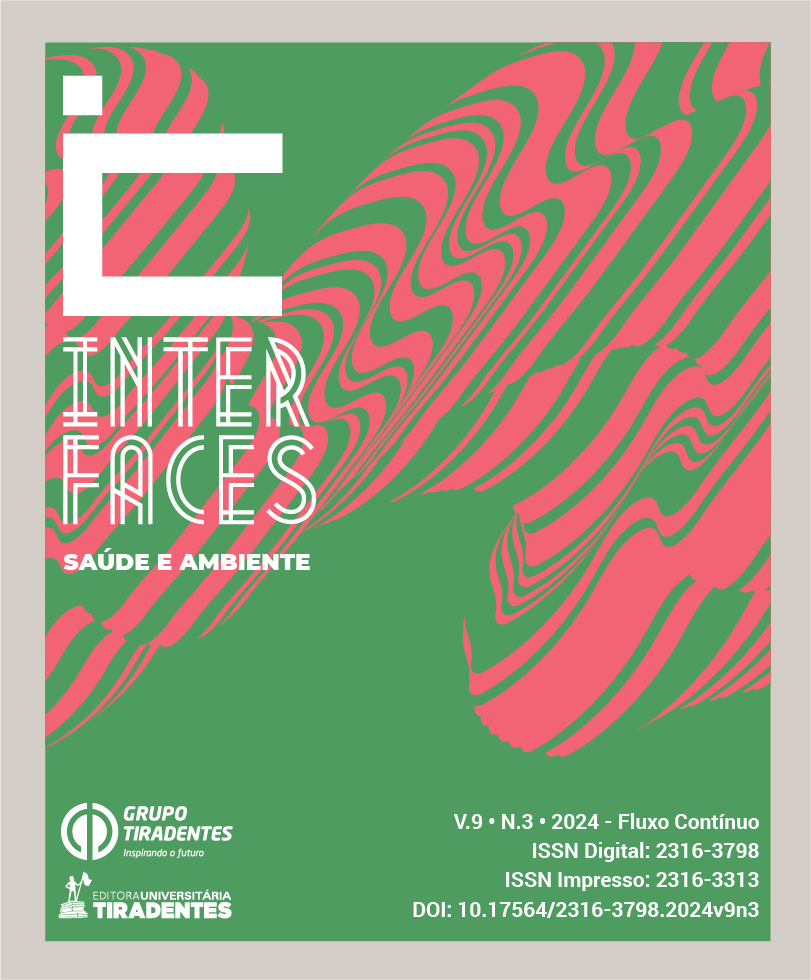OCCURRENCE OF BIOACTIVE COMPOUNDS IN SPECIES FROM THE BIGNONIACEAE AND SOLANACEAE FAMILY WITH ANTI-YEAST SPECTRUM OF ACTION
DOI:
https://doi.org/10.17564/2316-3798.2024v9n3p389-404Published
Downloads
Downloads
Issue
Section
License
Copyright (c) 2024 Interfaces Científicas - Saúde e Ambiente

This work is licensed under a Creative Commons Attribution-NonCommercial 4.0 International License.
Autores que publicam nesta revista concordam com os seguintes termos:
a. Autores mantêm os direitos autorais e concedem à revista o direito de primeira publicação, com o trabalho simultaneamente licenciado sob a Licença Creative Commons Attribution que permite o compartilhamento do trabalho com reconhecimento da autoria e publicação inicial nesta revista.
b. Autores têm permissão e são estimulados a distribuir seu trabalho on-line (ex.: em repositórios institucionais ou na sua página pessoal), já que isso pode gerar aumento o impacto e a citação do trabalho publicado (Veja O Efeito do Acesso Livre).
Abstract
In the Amazon rainforest, the great plant diversity harbors a variety of medicinal plant species with complementary therapeutical properties in the treatment of diseases, including those of microbial origin. The present study aimed to evaluate the antimicrobial activity of the organic extracts of Mansoa alliacea, Pleonotoma jasminifolia and Solanum sessiliflorum against the opportunistic pathogenic yeasts Candida albicans DPUA 1340, C. tropicalis DPUA 023, Trichosporon beemeri DPUA 213 and T. beigelii DPUA 208, as well as to select sources of biocompounds with larger spectrum of antimicrobial activity for future industrial applications. The extraction of biocompounds was made from leaves of the three plant species by ultrasound-assisted maceration with organic solvents (hexane, ethyl acetate and methanol). The antimicrobial activity was evaluated by agar well diffusion, broth microdilution to determine the Minimal Inhibitory Concentration (MIC) and bioautography assay. The results demonstrated that the organic extracts from the three plant species have inhibitory activity against the tested yeasts, except for T. beigelii, and that the hexane extracts from the three plant species have the larger activity spectrum, with T. beemeri being the most sensitive. The MIC results from hexane extracts demonstrated a weak activity to P. jasminifolia and moderate activity to M. alliacea and S. sessiliflorum. The bioautography assay with hexane extracts showed inhibitory activity of biocompounds with Rf between 0.6 to 0.93, and the use of chemical developers indicated the presence of phytochemical classes such as alkaloids, terpenes and flavonoids. To enable the industrial application, additional analyses should be taken.




















